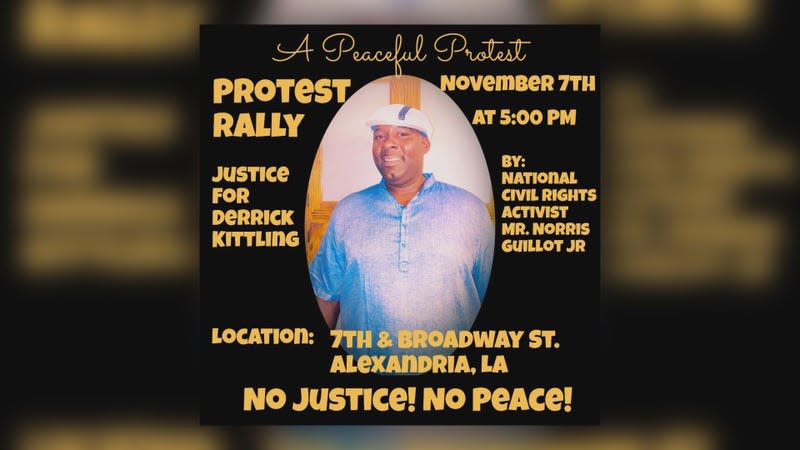Attorneys Say Cop’s Story Conflicts with a Witness’ Recording In a Louisiana Police Shooting

Derrick Kittling, 45, was fatally shot in the head by a Louisiana Sheriff’s Deputy Nov. 6, per KALB News. His death erupted anger within the community but also brought confusion after his family’s attorneys found the deputy’s account of the incident differed from a bystander’s video footage, per VICE.
The Rapides Parish police allege Kittling was pulled over for an unspecified traffic stop when a physical confrontation ensued between him and the sheriff’s deputy. The sheriff’s office claimed Kittling grabbed the deputy’s Taser, leading the deputy to fire a fatal shot at Kittling. Kittling died later at a local hospital. However, there may be more to the story after attorneys for Kittling’s family reviewed two videos taken by witnesses who saw the incident unfold, per VICE.
Read more
Here’s what one video showed according to VICE News:
The first video is 12 seconds long and shows Kittling and the officer in the distance wrestling on the ground between a patrol vehicle and a pickup truck. Something that sounds like a taser can be heard at the start of the video, and Kittling appears to be standing above the cop. It is unclear if either man had been tagged by the taser’s prongs, but Haley said the fact that they both continue to wrestle as it goes off suggests neither man was affected.
As the person recording the video takes a step closer towards the two men, the camera loses sight of the scuffle. When the person recording seemingly steadies the camera again, Kittling appears to be on the ground with his head by the officer’s lower legs. Kittling can be seen putting a hand up as the officer appears to take aim with his gun. A shot is fired and Kittling stops moving.
The second video obtained by VICE showed the moments immediately after the shooting. One bystander states Kittling was unarmed and the deputy grabs his radio and reports a gunshot wound to Kittlings’ head.
“He couldn’t handle that man, he was trying to tase him for no reason, pulling that man out the truck. That man had a family, man. You didn’t have to kill that man,” said one bystander in the video.
Attorney Ron Haley not only called into question the deputy’s reasoning for using deadly force but also the absence of body cam or dashcam footage from the incident. Without the bystander’s videos, this could have easily been swept under the rug.
“You can hear the taser being deployed. Which means the reason [the officer] felt deadly force needed to be used is because [Kittling] was reaching for what was essentially an unloaded weapon. Because if the taser had been deployed, [Kittling] could get the taser all he wants, but there’s nothing that can happen to the deputy,” Haley said to VICE.
Situations like these are precisely why police want to be protected from bystander recordings. If there’s no video evidence to prove an officer was out of line, they can escape an investigation.
More from The Root
Sign up for The Root's Newsletter. For the latest news, Facebook, Twitter and Instagram.

